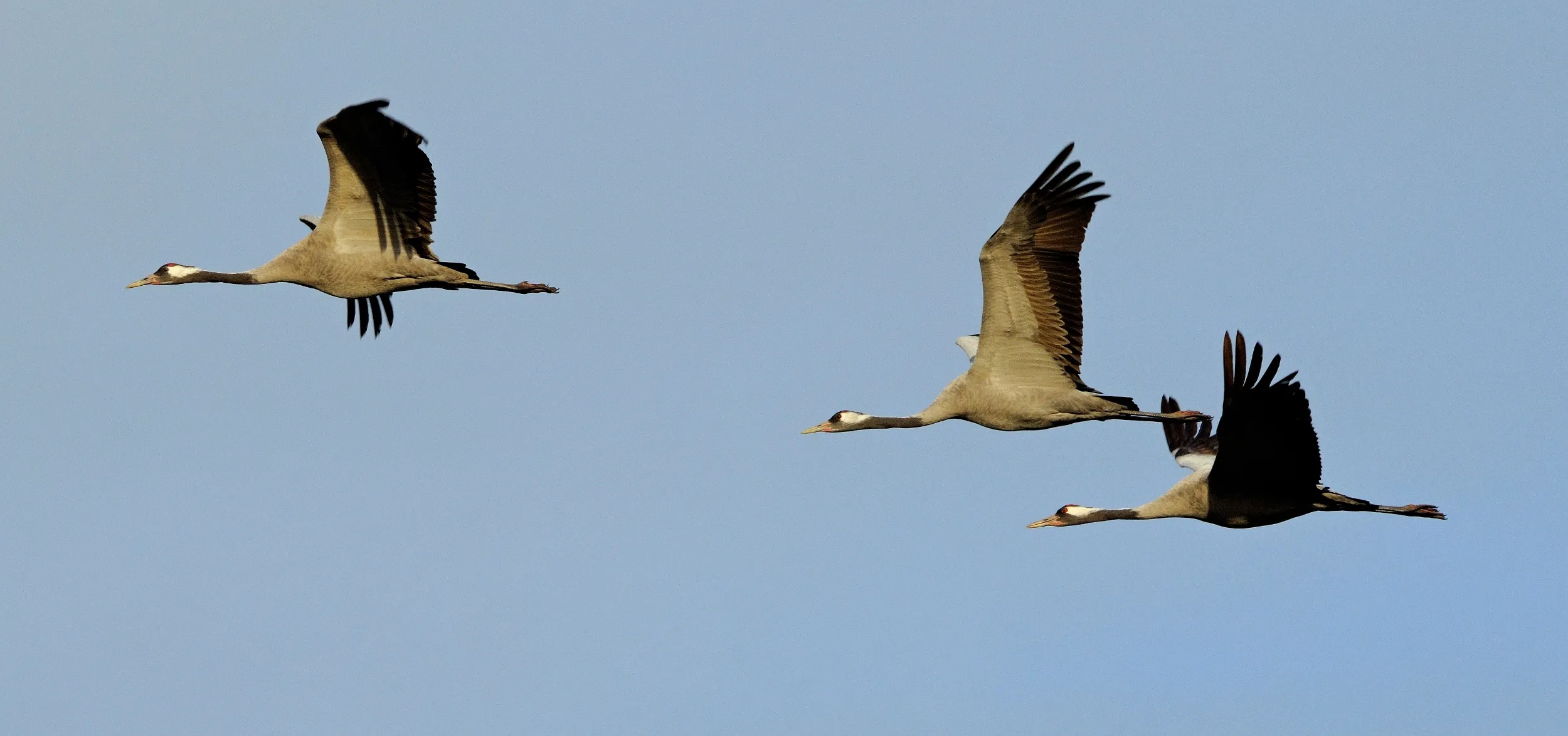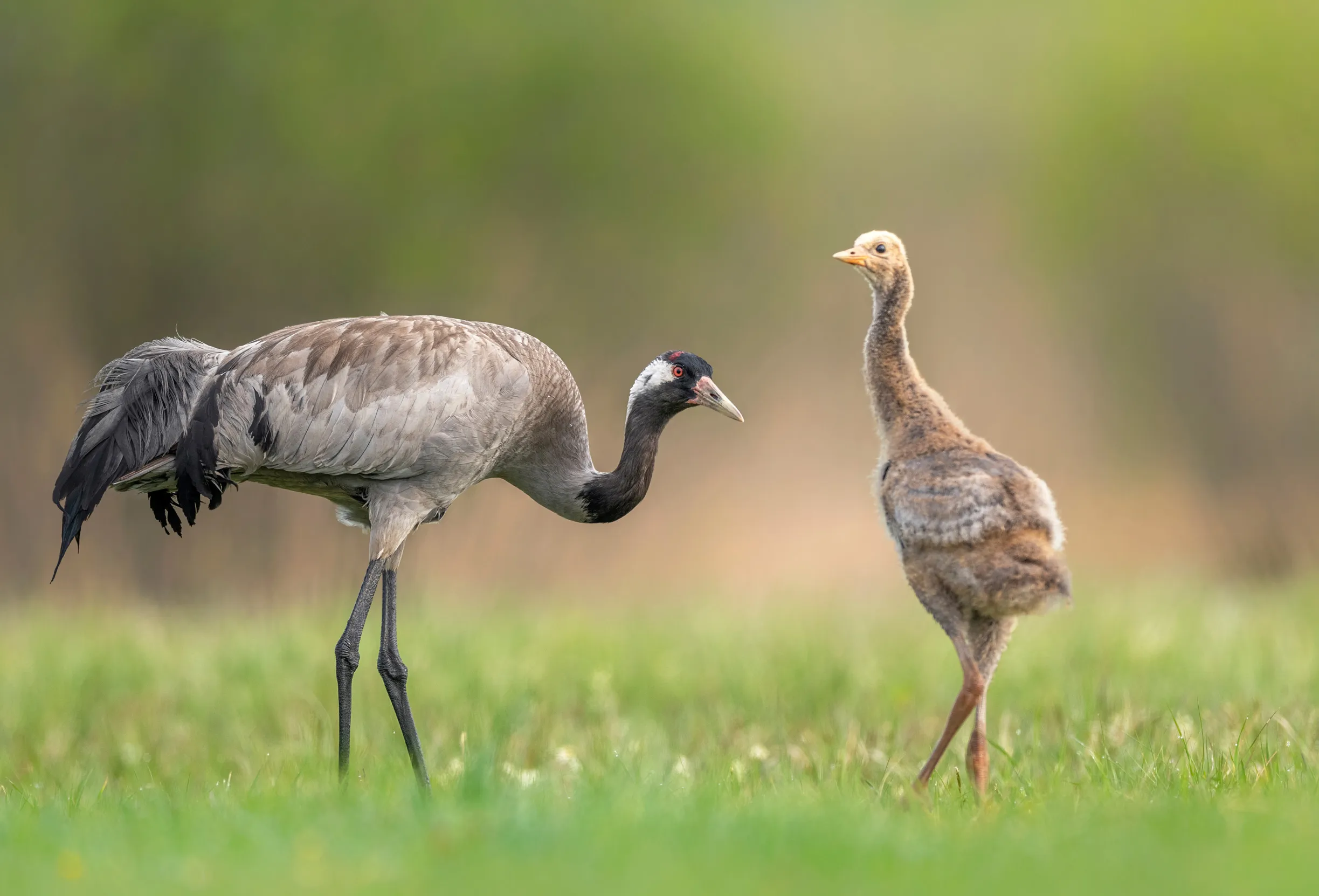News
Win tickets to see the Wild Isles Live Tour
One winner will receive a pair of tickets to join Alastair Fothergill, Wild Isles producer, for an inspiring evening of ...
More than 250 Cranes now grace the UK’s wetlands, the highest level since these elegant birds were lost from these lands more than 400 years ago. Find out what’s driving their return.

This year conservationists celebrated February’s World Wetlands Day with the news that the UK’s population of Cranes is now at its highest level since the species returned to the UK in 1979.
The 2023 breeding survey recorded at least 80 pairs of Cranes, building on 72 pairs in 2021. The latest figures show that up to 69 pairs attempted to breed last year, with a total of 36 Crane chicks successfully fledged. It’s a remarkable turn-around for these 1.2m tall birds and the total UK population is now in excess of 250 birds.
The continued comeback is a mark of success for the Great Crane Project reintroduction scheme, as well as a demonstration of how wildlife can be brought back when we create the right conditions for it to thrive.

Cranes became extinct, probably through hunting and overexploitation, with the last evidence of breeding in England in 1542. Prior to this they were quite common in certain areas, often featuring on the menus of medieval feasts. Their history in the UK is also recognised in many places names, such as the Viking name Tranmere in north-west England which means Crane-marsh, and the Anglo-Saxon name Cranmoor in southern England meaning Crane-moor.

Conservation efforts to restore and protect the UK’s wetlands have been key to turning around the Cranes’ fortunes. Nature reserves have played a vital role and over 80% of the breeding population of Cranes are now found on protected sites, including over a third on RSPB nature reserves alone.
Wetland areas provide refuge to huge numbers of native and migrant birds, including Cranes. Wetlands are also capable of storing vast quantities of carbon, and their value in helping to combat and lessen the effects of climate change is becoming ever more important. Recent flooding across the UK and the expectation of more frequent heavy rainfall events due to climate change has highlighted another key role of wetlands – their ability to hold onto water, slow down its flow and help reduce the impact of extreme weather on people and property.
RSPB conservation scientist Andrew Stanbury explains: “Recent announcements from the UK government to spend £16m rewetting and restoring peatlands across England, along with a second round of the Landscape Recovery project to support net zero goals, protected sites and wildlife-rich habitats are good news for our Cranes and countless other species. Investing in nature’s recovery benefits everyone. We must now go further and move faster, scaling up efforts to restore protected sites and landscapes by 2030 if wildlife and people are to thrive.”

The Cranes’ comeback began with the arrival of a small number of wild birds to the Norfolk Broads. This was followed by the first breeding attempt in 1981, only a few miles from the last historic breeding record. This gave hope that the Cranes might be able to re-establish a viable breeding population.
However, during the first two decades, the recolonisation proceeded very slowly. The population stood at just five pairs nationally in 2000. So, in 2010 the Great Crane Project was formed – a partnership between the RSPB, the Wildfowl and Wetlands Trust and the Pensthorpe Conservation Trust, funded by Viridor Credits Environmental Company.

In 2010, the ambitious five-year project began with the aim of creating a Crane stronghold on the Somerset Levels and Moors. This involved the intensive work of hatching eggs and hand-rearing and releasing Crane chicks. In total 94 chicks were successfully released, and the first successful breeding took place in 2015. Since, the population has steadily increased and while most birds are found in the Somerset Levels and Moors, there are signs that they are spreading into other suitable places.

The ongoing return of Cranes to the UK is a success story to celebrate. But it would not be possible without the ongoing support of more than one million RSPB members, supporters and many others. It thanks to you that we, the RSPB, and other conservationists are able to foster the birds’ return and work to restore the wetland habitats they need. Thank you.
Standing at 1.2m high, Cranes are elegant birds known for their extraordinary courtship dance involving head bobbing, bowing and pirouetting. Join RSPB film maker Nicholas Rodd as he heads to RSPB West Sedgemoor in Somerset to capture some amazing footage.
Cranes can be seen on a number of RSPB nature reserves including:
West Sedgemoor, Somerset
Lakenheath Fen, Suffolk
Nene Washes, Cambridgeshire
Loch of Strathbeg, Aberdeenshire